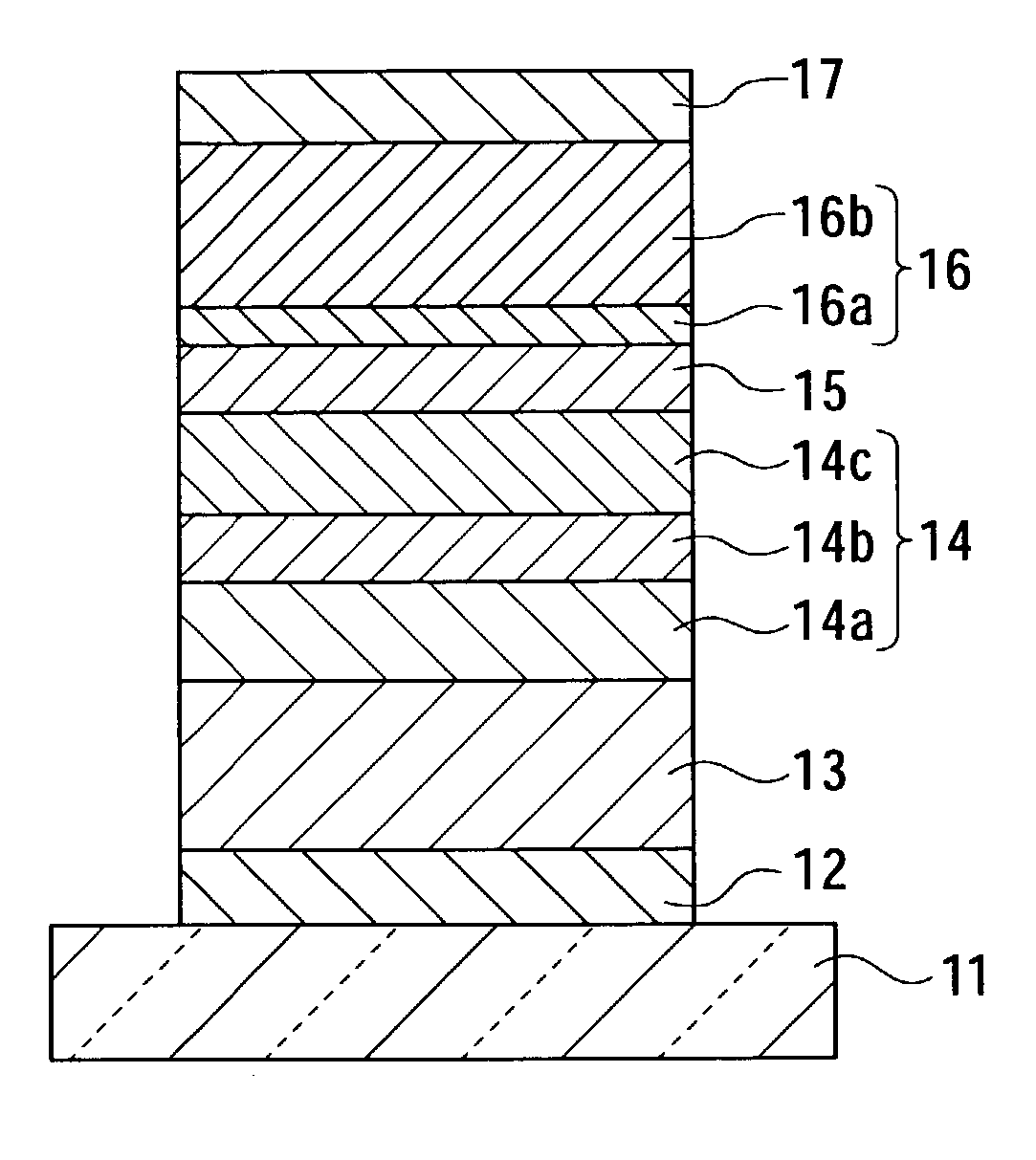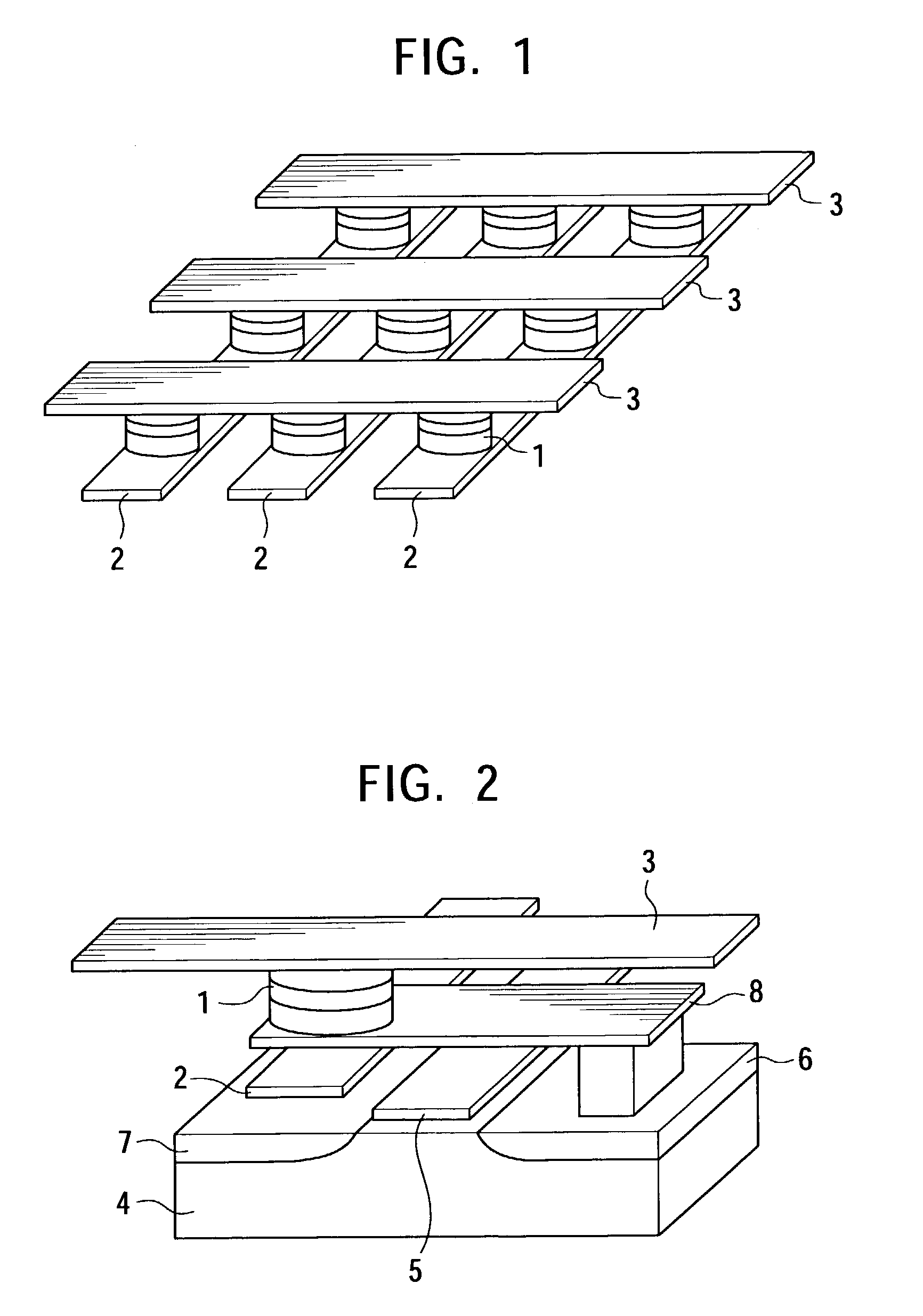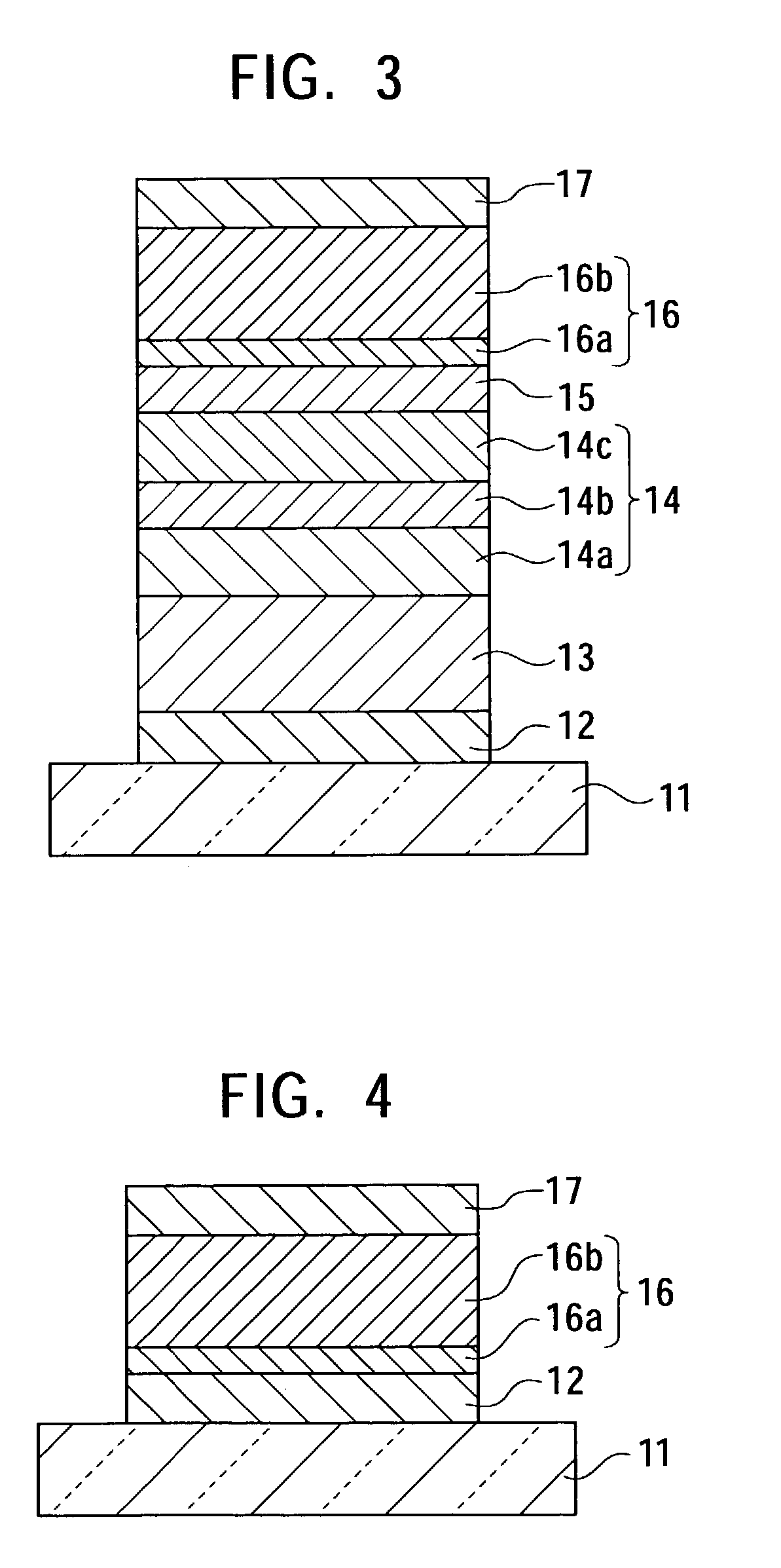Magnetoresistive element, method for making the same, and magnetic memory device incorporating the same
a magnetic memory device and element technology, applied in the field of magnetoresistive elements, can solve the problems of increasing the energy consumption required for writing information, increasing the demagnetizing field in the free layer, and difficulty in changing the ferromagnetic material constituting the free layer, so as to avoid the problem of reducing the thickness of the free layer and the increase of coercive force
- Summary
- Abstract
- Description
- Claims
- Application Information
AI Technical Summary
Benefits of technology
Problems solved by technology
Method used
Image
Examples
Embodiment Construction
[0021]A magnetoresistive element, a method for making the magnetoresistive element, and a magnetic memory device using the magnetoresistive element according to the present invention will now be described with reference to the drawings. In the following embodiment, the magnetoresistive element is of a tunneling magnetoresistive (TMR) type, hereinafter referred to as a “TMR element”, and the magnetic memory device is a magnetic random access memory (MRAM) incorporating the TMR element.
Structure of Magnetic Memory Device
[0022]The overall structure of a magnetic memory device according to an embodiment of the present invention will now be described. FIG. 1 is a perspective view of a basic structure of a MRAM. The MRAM includes a plurality of TMR elements 1 arranged in a matrix. Word lines 2 are arranged in a transverse direction on the rows of the TMR elements 1. Bit lines 3 are arranged in a longitudinal direction under the columns of the TMR elements 1. Each of the TMR elements is di...
PUM
| Property | Measurement | Unit |
|---|---|---|
| thickness | aaaaa | aaaaa |
| thickness | aaaaa | aaaaa |
| thickness | aaaaa | aaaaa |
Abstract
Description
Claims
Application Information
 Login to View More
Login to View More - R&D Engineer
- R&D Manager
- IP Professional
- Industry Leading Data Capabilities
- Powerful AI technology
- Patent DNA Extraction
Browse by: Latest US Patents, China's latest patents, Technical Efficacy Thesaurus, Application Domain, Technology Topic, Popular Technical Reports.
© 2024 PatSnap. All rights reserved.Legal|Privacy policy|Modern Slavery Act Transparency Statement|Sitemap|About US| Contact US: help@patsnap.com










